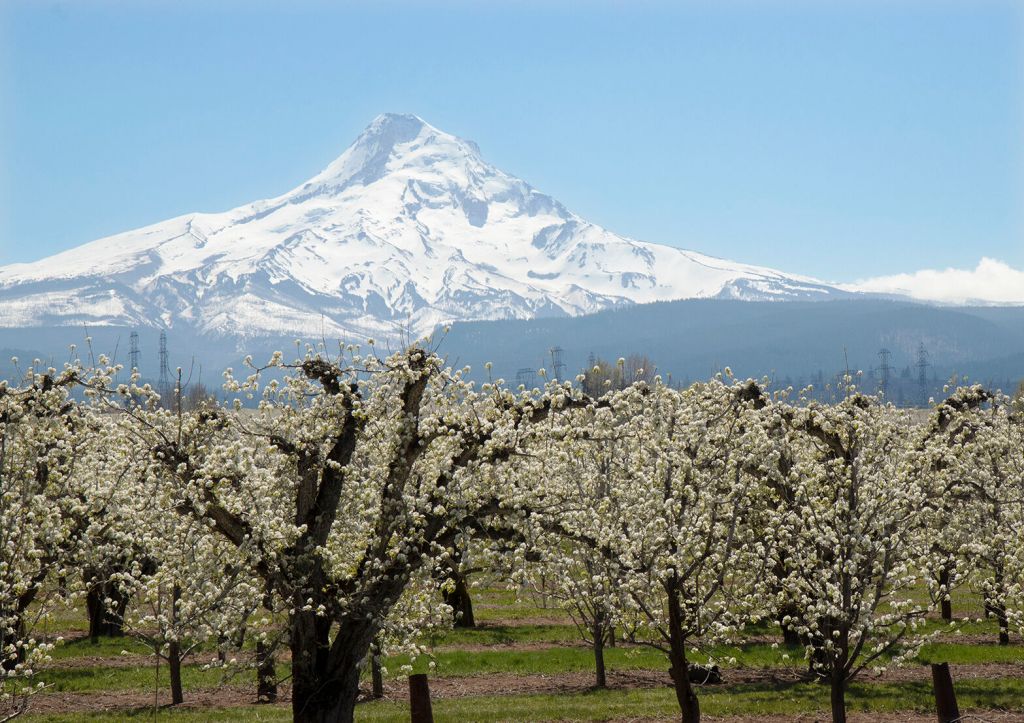Agritourism enterprises face zoning and land use challenges
Published 1:00 pm Thursday, August 12, 2021

- Mt. Hood is the backdrop for pear orchards in bloom near Hood River, a popular agritourism destination. Agritourism is on the rise, which many Oregon farmers say is an opportunity to make additional income and expose urbanites to farm life.
SALEM — Agritourism is on the rise, which many Oregon farmers say is an opportunity to make additional income and expose urbanites to farm life.
But agritourism carries risks. Experts say land use violations, intentional or not, are common, resulting in unhappy neighbors and escalating to litigation: “the ugly side of agritourism.”
“For every farmer or landowner that wants to do agritourism, there are 10 farmers that don’t want to be next door,” said Jim Johnson, land use and water planning coordinator at the Oregon Department of Agriculture.
Land use violations may frustrate neighbors, give operations an unfair advantage over competitors, raise land prices and expose farmers to lawsuits.
In a 2020 study on recent agritourism-related litigation, citing several major Oregon lawsuits, Ohio State University researchers Peggy Hall and Ellen Essman wrote that there’s a need for farmers to better understand “how local land use laws define and regulate agritourism before proceeding with an activity, so as not to end up in a land use lawsuit.”
Land use cases typically center on zoning compliance and varying interpretations of “agritourism,” according to the National Agricultural Law Center.
Broadly, agritourism is the crossroads of tourism and agriculture. Examples include pumpkin patches, cut-your-own Christmas tree farms and dude ranches. But what about weddings? Wineries? Goat yoga?
Johnson, of ODA, said he thinks “agritourism” is not defined clearly enough in Oregon statute.
Counties also create rules, adding to the complexity.
In Oregon, common complaints include concerns about tourists and their cars blocking crucial roadways, loud events and proposed recreation areas that would restrict neighbors from spraying pesticides. Courts typically rule in favor of right-to-farm laws, meaning agritourism operations often have to shut down or scale back certain activities.
Hood River County, a top agritourism destination, exemplifies land use conflicts.
Heather Staten, a flower grower and policy director at Thrive Hood River, a nonprofit land use advocacy organization, said she sees “growing conflict” between agriculture and tourism.
Producers need to operate without disruptions, she said; cars blocking a driveway can limit a farmer’s ability to deliver goods on time.
Another common complaint pertains to food and beverage sales.
Certain farm stands and wineries, under Oregon statute, are supposed to source ingredients primarily from the farm, but officials say establishments often exceed permit limitations and sell too much food from outside sources.
Critics include restaurants in nearby towns that are subject to higher taxes and more regulations.
“Commercially zoned restaurants may not be able to compete,” said Johnson.
Some agritourism site operators, in response, say they are already over-regulated and the rules are arbitrary.
Experts say farmers and ranchers seeking to diversify their operations under the umbrella of “agritourism” should do their research before implementing new ideas.
Despite drawbacks, many industry leaders say agritourism’s benefits outweigh its negatives.
“Agritourism is a wonderful way to educate people and bring them into the world of farming,” said Susan Richman, board president of Friends of Family Farmers.





